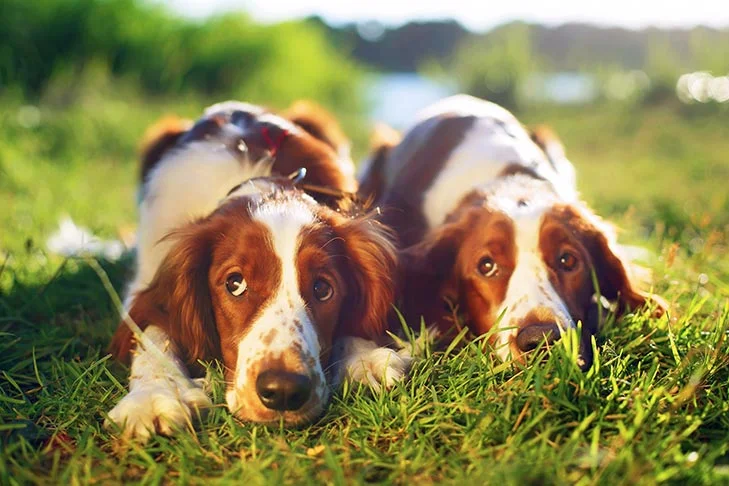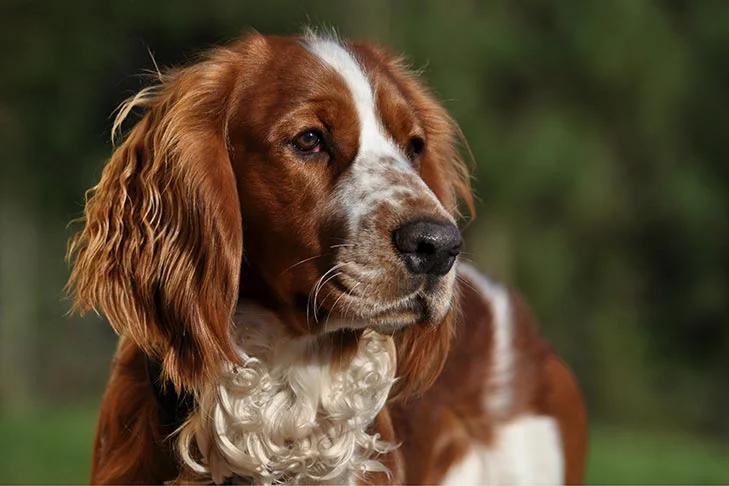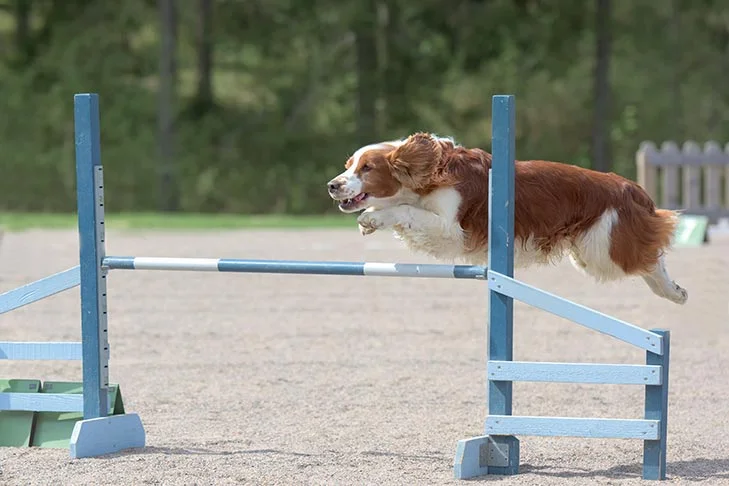A lively, medium-sized bird dog with a cheerful personality, the Welsh Springer Spaniel is renowned for his flexibility in the field, companionability at home, and dazzling good looks everywhere he goes. One of Britain’s oldest sports breeds is the Welshie. Welshies are considered to be of “handy size,” meaning that they are larger and stronger than Cocker Spaniels but smaller than English Springers, standing between 17 and 19 inches at the shoulder. Two characteristics set Welshies apart from other Spaniels: a distinctively tapered head and an eye-catching coat with striking red and white patterning. The stunning coat is more than simply a fashion statement; it also serves as waterproof, weatherproof, and thornproof clothing that allows Welshies to exhibit their legendary adaptability in all weather conditions and on all surfaces.
Welsh Springer Spaniel
Average sizes and life
expectancy of the breed.
Height
18-19 inches (male)
17-18 inches (female)
Weight
40-55 pounds (male)
35-50 pounds (female)
Life Expectancy
12-15 years
Breed Traits & Characteristics
About the Breed

Owning a dog is not just a privilege; it’s a responsibility. They depend on us for, at minimum, food and shelter, and deserve much more. When you take a dog into your life, you need to understand the commitment that dog ownership entails.
 Health
Health
Recommended Health Tests From the National Breed Club:
- Hip Evaluation
- Ophthalmologist Evaluation
- Thyroid Evaluation
- Elbow Evaluation
 Grooming
Grooming
 Exercise
Exercise
 Training
Training
 Nutrition
Nutrition
History
Leading authorities claim that Welsh Springer Spaniels, who are descended from the original spaniels of the Iberian Peninsula (the word “spaniel” is derived from “Spaniard”), are the oldest of Britain’s spaniels. Welshie-type dogs first appear in British art and literature around 250 years BC. How these dogs got from Spain to Wales in antiquity is one of those canine riddles that historians chalk up as “lost in the mists of history.” In the early 1900s, Welsh and English Springers developed into distinct breeds.




